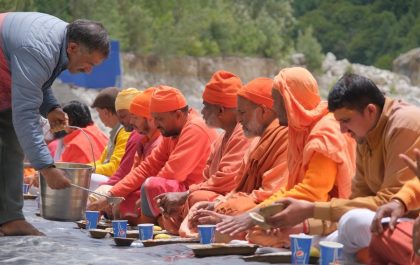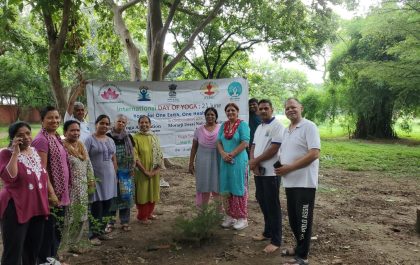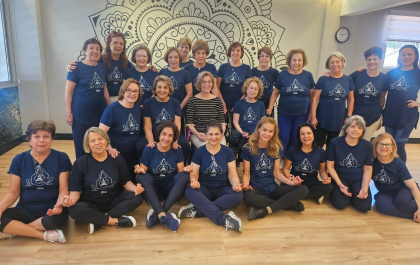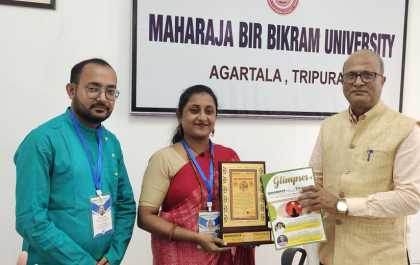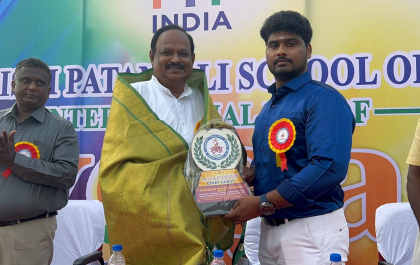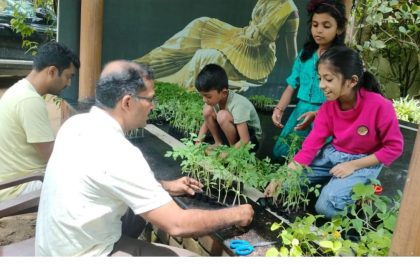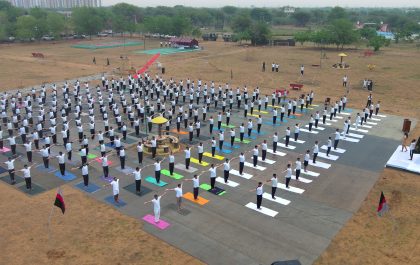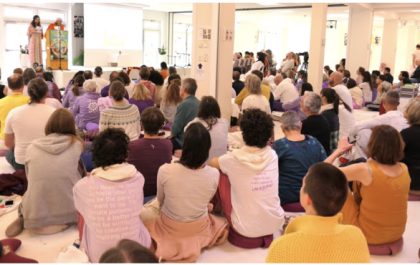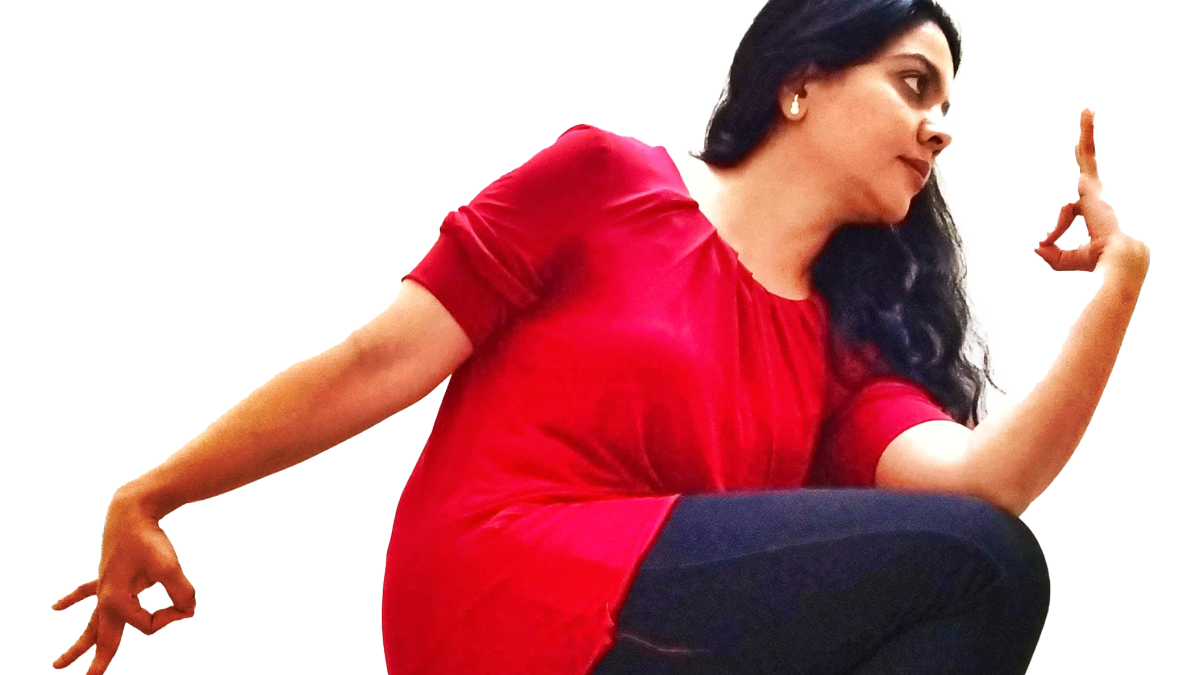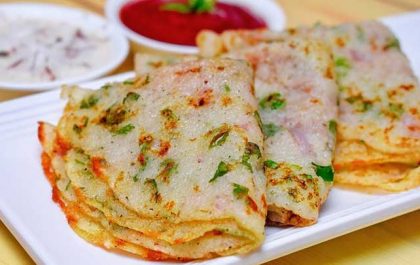by Shri N. Elumalai, PhD Scholar (Yoga Science), MAHER
Prapada Tandavasana (Tip Toe Pose inspired by Shiva’s Vigorous Cycle of Life Dance)
In Sanskrit, prapada means ‘tip toe’, tandava means ‘frantic dance’ or simply ‘dancing’ and asana means ‘pose.’ In Hinduism, this refers to a vigorous dance that the Lord Shiva, in His role as destroyer, performed in cremation grounds and cemeteries. It is a part of the balancing yoga poses series. The balancing poses always help to strengthen your hamstrings, calves, quads, glutes, and abs, which increase brain functionality. For relief of excessive tension, these kind practices should be held for as long as comfortable. According to science, balancing is linked to a longer lifespan. In general, balancing asanas help to improve muscle coordination and posture, inducing physical and nervous balance, and stilling unconscious movement of the practitioners. This conserves energy and achieves grace and fluidity of motion.
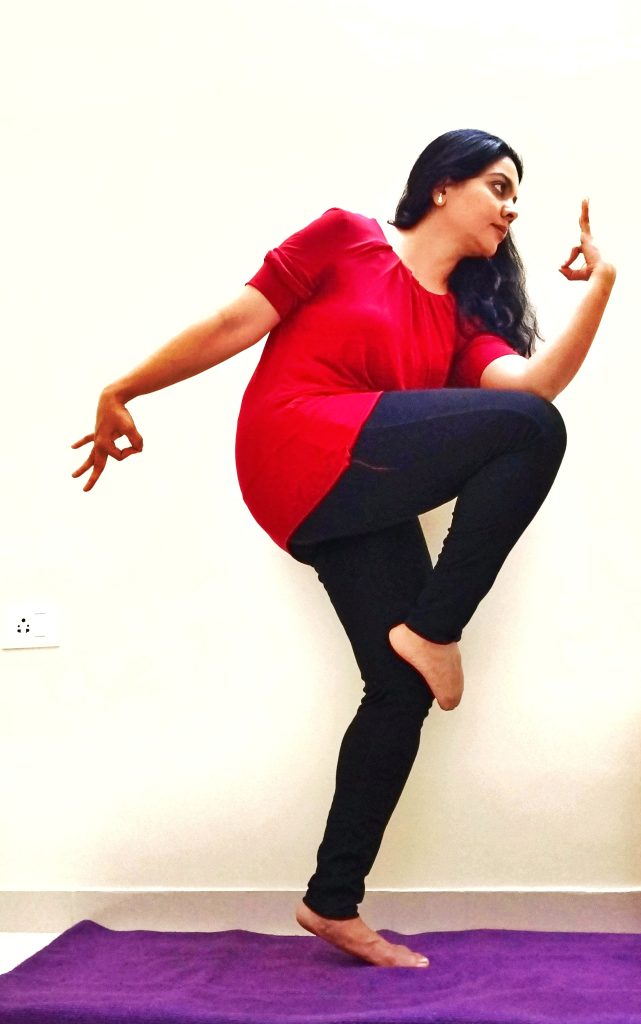
STEPS
First, you can stand upright on the yoga mat with your feet slightly apart.
After that, while bending the right knee, inhale, raise it so that the thigh is horizontal, the foot pointing away from the body and close to the left leg. Now bend the left knee slightly.
Then, bring your right arm backward, palm in line with the right thigh and right knee with fingers facing down.
Now bend the left elbow so that the left palm is facing forward and the forearm is vertical.
Bring your left elbow and place it on the right knee, fingers facing the sky.
Now, practice the Jnana Mudra with the right and left hands, gazing in front of you with focusing the left palm.
Make sure your right heel is on your left knee, toes facing down.
Now, inhale, raise the heel of the left leg and ensure you stand on the toes of the left leg. This is the final position.
Fix your eye gaze to a point in front of you for focus so that you can maintain your balance. Breathe normally throughout the practice.
You can now stay in the position of Prapada Tandavasana about 30 seconds or as per your comfort.
Release the pose slowly and come back to the original position.
After relaxing for a while, you have to perform the posture on the other side following the above instructions.
Finally, release the pose and relax in Balasana (Child’s Pose).
BENEFITS
Strengthens chest, arms, shoulders, wrists, elbows, hips, ankles, toes, legs, and core.
Improves posture, balance, postural awareness, and flexibility.
Massages abdominal muscles and stretches the diaphragm, supporting lung function.
Tones glutes, quads, thighs, and legs.
Releases tightness in chest, shoulders, neck, and lower back.
Enhances hip mobility and spinal range of motion.
Boosts metabolism and supports weight loss.
Stimulates the digestive system and benefits kidneys, intestines, and reproductive organs.
Calms the mind, relieves stress, and enhances focus and concentration.
Builds confidence and mental clarity—especially helpful for kids and teens.
Improves joint stability and endurance.
Aids in relieving minor pain in hamstrings, calves, and knees.
Benefits athletes, dancers, gymnasts, and runners.
A great practice for senior citizens to counteract aging effects.
LIMITATIONS
Students who are suffering from vertigo, high blood pressure, dizziness, headache, breathing problems should take it slowly without twisting the head.
People with injuries at joints of hips, knees, spine, or shoulders, or who have undergone any abdominal surgery should not attempt this asana.
Women during the later stage of pregnancy and menstruation period should avoid this practice.
Students who are suffering from low blood pressure must avoid practicing this pose.
During the practice, you can seek the guidance of a yoga expert for gaining balance.
You should not lose your focus while balancing in Jnana Mudra.
